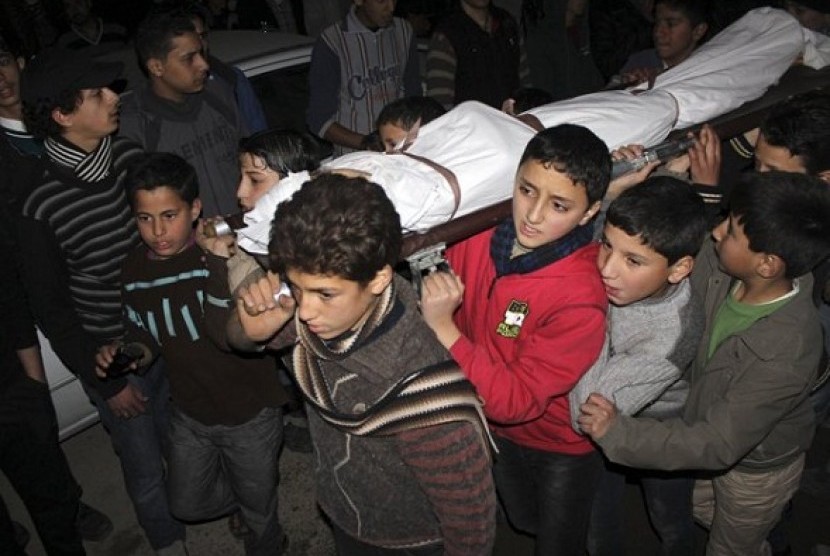REPUBLIKA.CO.ID, GENEVA -- Some 15,000 children have fled the western section of Iraq's Mosul city over the previous week where fighting between the government forces and the Islamic State of Iraq and Syria (ISIS) terrorists is intensifying, the United Nations Children's Fund (UNICEF) said Friday.
"UNICEF is responding to the immediate needs at the Hamam Al Alil camp, 20 km from Mosul, where aid is provided to children upon their arrival," UNICEF Regional Emergency Advisor Bastien Vigneau was quoted as saying over the phone from Iraq.
He noted that the children were very scared of the sound of the bombs, which was one of the main reasons their parents had decided to flee. They fled with very little luggage and in most cases with a bare minimum of clothes. The children and their families arrived mostly by buses organized by the military.
The main priorities, other than the first emergency response, included health, to ensure that children were immunized, primarily against measles and polio, said Vigneau. Matthew Sarmash, spokesperson for the Office of the UN High Commissioner for Refugees (UNHCR), said that a significant increase in displacement had been noticed in recent days and the Hamam Al Alil camp was close to reach its maximum capacity.
At the moment, 150,000 places were occupied. He said construction is under way to accommodate up to 250,000 people there. Vigneau said that more than 100,000 children have been displaced from Mosul since the military operations against the Islamic State of Iraq and the Levant (ISIL) began in October 2016.
The troops' advance toward Mosul came after the Iraqi Prime Minister Haider al-Abadi announced on Feb. 19 the start of an offensive to drive the extremist militants out of the western side of Mosul, locally known as the right bank of Tigris River which bisects the city.
In late January, al-Abadi declared the liberation of the eastern side of Mosul, or the left bank of Tigris, after more than 100 days of fighting against the ISIS militants. However, the western side of Mosul, with its narrow streets and a heavy population of between 750,000 and 800,000, appears to be a bigger challenge to the Iraqi forces, according to the United Nations estimates.
Mosul, 400 km north of the Iraqi capital of Baghdad, has been under ISIS control since June 2014, when Iraqi government forces abandoned their weapons and fled, enabling ISIS militants to take control of parts of Iraq's northern and western regions.



